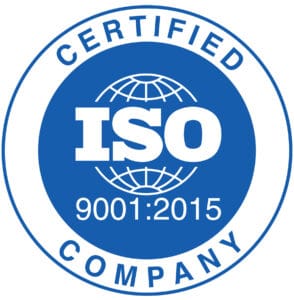Bflex Lifestock ID achieves ISO 9001:2015 certification with verve thanks to Symbol
‘It’s cumbersome, it’s rigid and puts constraints on your operations.’ This was the perception about ISO at Bflex Lifestock ID – a Dutch supplier of ear tags and animal identification systems. Until Symbol came around the corner. Together, the two organizations worked toward ISO 9001:2015 certification in 1.5 years. The result? The certificate is in the pocket and the company is compliant without being too bothered by it.
Learn more about ISO9001:2015 implementation and other quality systems on our Quality Management page. Of course, you can always contact us by calling 053 – 20 30 240 or using the contact form below.
The company’s lifetime warranty and excellent help desk have made Bflex a reputable supplier for companies in the agricultural sector. “These are really our unique selling points, the drivers for our customers to be customers with us in particular,” says Lex Bant, business manager at Bflex Lifestock ID. “Not for nothing have we grown significantly over the past three years. And in addition to Dutch customers, Belgian farmers now also know how to find us. One of those Belgian customers also asked us about ISO certification, because this is mandatory in Belgium. To be honest: we were not immediately eager to get started. We thought it would have a huge impact on our business. And then not in the positive sense.”

ISO audit passed with flying colors
Bant therefore decided to seek outside help, namely from Symbol. A sister company of Bflex Lifestock ID had also previously been successfully helped by Symbol to achieve ISO certification. “That company had to comply with an older ISO standard, which meant that a whole heap rather than a grain of salt was put on every slug. That’s also where our resistance came from: we had the image that ISO was not workable. Fortunately, that perception turned out to be wrong. First of all because the 2015 version of the 9001 standard, which we had to comply with, is slightly more flexible than 9001:2008. But mainly because our Symbol consultant Judith Varenhorst showed us what liberties could be afforded within the set rules. As a result, we passed the ISO audit with flying colors – without suffering too much.”
A well-organized chaos
Varenhorst and Bant started the process by working out all the processes, and checking them with the rest of the staff. ‘Does this outline how you work? And what could you do differently – better?’ A management system was then used to create the organization’s clear flow chart. “So we took a very practical look at how work is done within Bflex Lifestock ID and used that as a basis,” Bant says. “Very valuable, because it turned out to be a well-organized chaos in which not all employees were aware of the latest instructions and practices. We changed that.”
Point of improvement: the post
One area of improvement appeared to be in sending mail. “We send about 1,200 pieces of mail per month with replacement earmarks to our customers. Of course it’s useful to know exactly where those mail pieces are, in case you get questions about them. We just didn’t always know – after all, you don’t get a track & trace code with mail pieces, as you do with parcels. If a customer asked us where his tags were, we often had to refuse to answer. Yes, the tags were made, but what happened to them afterwards… Now we keep track every day of what goes out the door and when. That way we can provide our customers with much better answers.”
ISO, well implementable
In the end, all areas of improvement regarding the ISO – including complaint registration, quality control at the machines and supplier quality assurance – turned out to be well implementable. “Totally unexpected for us,” laughs Bant. “My colleague even asked at one point, ‘What’s the status of the ISO, anyway? I’m supposed to notice something about that, right? Are we complying?’ And that while the ISO audit was already scheduled at the time. We tackled many issues ad hoc, which may also have helped. Then a problem arose and Judith and I immediately laid down how this could be prevented next time. In this way we were able to keep improving our processes, while at the same time keeping our freedom.”
A great side note
Of course, the whole thing did take a lot, but it also gave us a lot,” Bant continued. “Not only do we have that ‘dicky’ piece of paper in, the structures within our organization are much clearer now. There is much more control, and that was necessary. And nice to see: people are much more critical of how they work. They have become more articulate and think along about areas for improvement: what could be easier in their workplace, for themselves and for controls and procedures. In short, instead of being afraid of change, change is now embraced. A great bonus.”